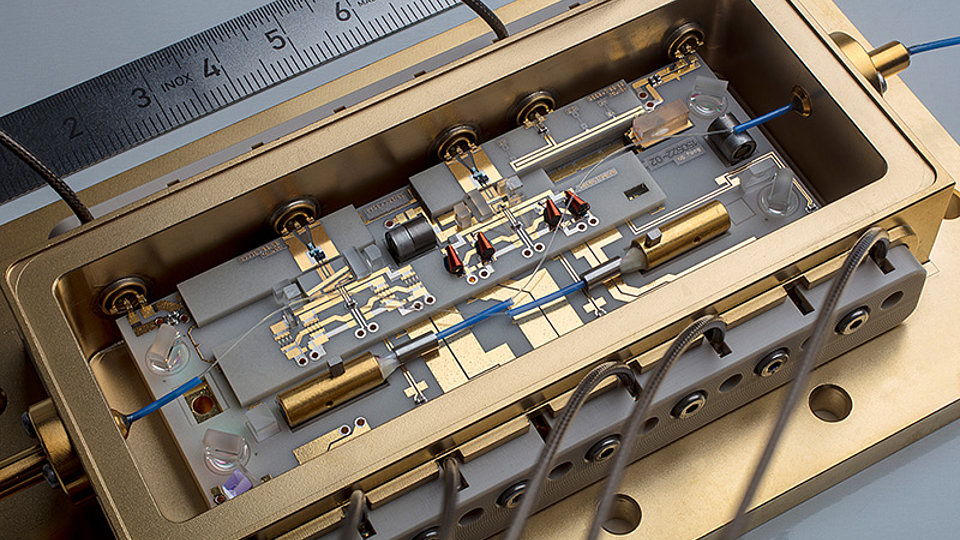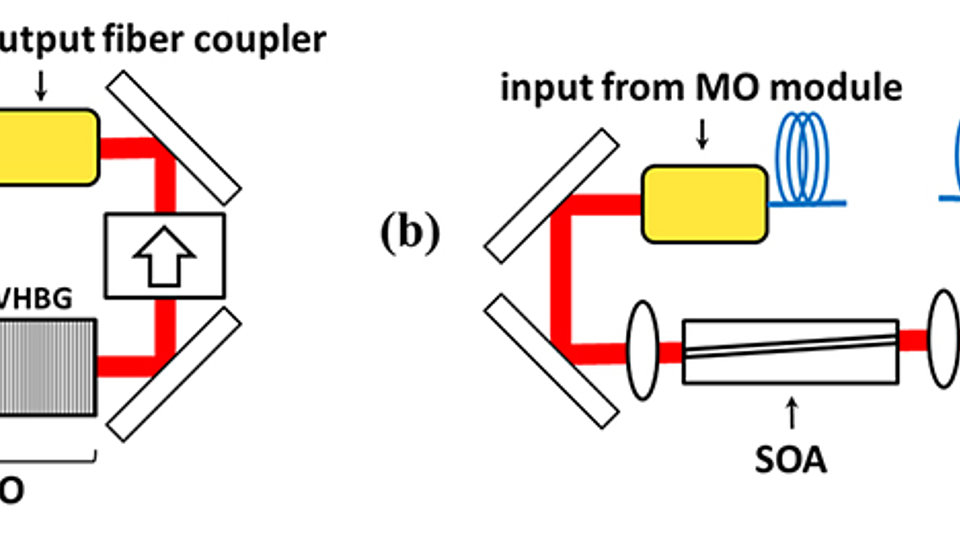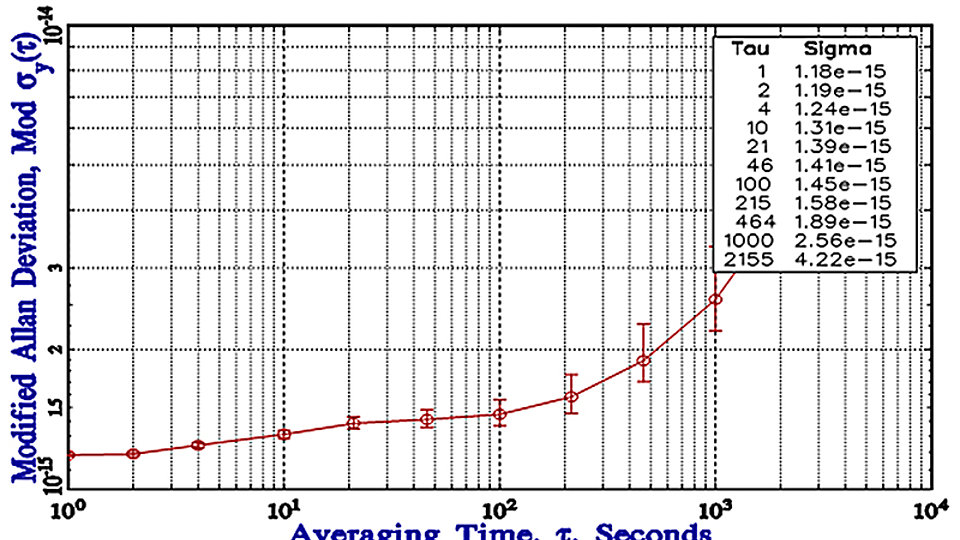Compact micro-integrated laser modules for the next generation of optical clocks
Optical clocks based on optical transitions of neutral atoms trapped in optical lattices or of single ions confined in radio-frequency traps are particularly precise. They can achieve an accuracy of a few parts in 1018 [1], thus opening the door for a wide range of commercial applications. These include geodesy, deep navigation and telecommunications. However, today’s prototypes of the most accurate optical clocks are still being operated inside specialized labs under well-defined conditions.
The partners of the Opticlock pilot project (www.opticlock.de) are developing a transportable, compact, robust, and user-friendly optical clock to be operated outside such a lab (Fig. 1). The clock itself is based on the 2S1/2-2D3/2 transition of a single 171Yb+ ion at 436 nm. The required compact micro-integrated clock laser module was developed and realized at FBH.
The clock laser has to provide an output power of a few hundreds of milliwatts out of a single-mode polarization-maintaining optical fiber at 871 nm wavelength with a short term linewidth (10 µs) of <1 MHz. For this purpose, the laser system was realized consisting of two modules, a master oscillator (MO) module with an extended cavity diode laser (ECDL) to satisfy the narrow linewidth requirements. A power amplifier (PA) module with a semiconductor optical power amplifier (SOA) provides the necessary power amplification (Figs. 2a + b).
For the MO module, the optical cavity of the ECDL is defined by the front facet of a 2 mm long ridge waveguide laser chip and a volume holographic Bragg-grating with a nominal resonance frequency of 344.179 GHz (871.035 nmvac) at 30°C. The MO module has a single-stage miniaturized isolator (30 dB isolation, insertion loss is 8 dB at 871 nm). The fiber-coupled output of the MO module is then fed into the PA module via an external faraday isolator to guarantee sufficient isolation (>55 dB) between the ECDL-MO and the SOA. Both modules are fiber-coupled. They are realized on a micro-optical bench that is adhesively connected to a Kovar housing. The total mass of each module is 750 g [2]. Please note that the integration of the MO and PA within a single module is also feasible. However, no optical isolator with sufficient optical isolation at the wavelength of 871 nm was available for micro-integration.
The MO and PA modules were integrated into the optical reference system, a clock laser system, that has been developed by the project partner Menlo Systems. The MO module is locked to a compact Fabry-Perot optical cavity that consists of a 5 cm ultra-low expansion glass (ULE) cube [3] The obtained finesse of the fundamental TEM00 mode is ~ 2.3×105. A standard Pound-Drever-Hall locking scheme is implemented by generating 20 MHz sidebands on the injected cavity light, yielding a locking bandwidth of around 1.8 MHz.
The optical reference system was then integrated into the Opticlock rack system in the clock hall at Physikalisch-Technische Bundesanstalt (PTB). The frequency stability of the laser locked to the ULE cavity was compared to a superior reference laser [4] via an optical frequency comb. A modified Allan deviation of better than 1.5 × 10-15 for an averaging time between 1 s and 100 s has been demonstrated (see Fig. 3). Currently, the driving electronics of the clock laser is being optimized by Menlo Systems in order to achieve reliable long-term operation of at least one week.
This project is part of the German quantum initiative funded by the Federal Ministry of Education and Research (BMBF) within the program Photonics Research Germany under contract number 13N14387 (project: Opticlock, 01.05.2017-30.04.2020)
Publications
[1] W. F. McGrew et al, “Atomic clock performance enabling geodesy below the centimetre level” Nature vol. 564, pp. 87–90(2018).
[2] Ch. Kürbis, A. Bawamia, M. Krüger, R. Smol, A. Peters, A. Wicht, and G. Tränkle, "Extended cavity diode laser master-oscillator-power-amplifier for operation of an iodine frequency reference on a sounding rocket," Appl. Opt. 59, 253-262 (2020).
[3] S. Webster et al., “Force-insensitive optical cavity,” Opt. Lett. 36, 3572 (2011).
[4] D. G. Matei et al., “1.5 µm lasers with sub-10 mHz linewidth,” Phys. Rev. Lett. 118, 263202 (2017).



